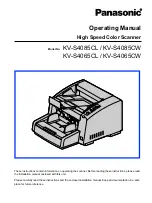
13
Once you understand a few simple terms used in this manual and familiarize your-
self with your scanner’s features, you can put the scanner to work for you. You sim-
ply determine the type of communications you want to receive, then set the
scanner to scan them.
A frequency is the tuning location of a station (expressed in kHz or MHz). To find
active frequencies, you can use the search function.
You can also search the service-search banks, which are preset groups of fre-
quencies categorized by type of service.
When you find a frequency, you can store it into a programmable memory location
called a channel, which is grouped with your other channels in a channel-storage
bank. You can then scan the channel-storage banks to see if there is activity on
the frequencies stored there. Each time the scanner finds an active frequency, it
stays on that channel until the transmission ends.
A LOOK AT THE KEYPAD
Your scanner’s keys might seem confusing at first, but this information should help
you understand each key’s function.
Note: Some of the scanner’s keys perform more than one function and are marked
with more than one label. The steps in this Owner’s Manual show only the label on
the key appropriate to the action being performed.
SCAN
— scans through the programmed channels or ID code.
WX
— scans through the 7 preprogrammed weather channels.
ATT
(attenuate) — turns attenuation on to reduce the scanner’s sensitivity, or turns
it off to increase it.
UNDERSTANDING YOUR SCANNER
20-196a.fm Page 13 Friday, June 2, 2000 3:48 PM













































